-
Posts
12420 -
Joined
-
Last visited
-
Days Won
551
Content Type
Profiles
Forums
Events
Everything posted by Fiery
-
We will implement separate CPU1 Package and CPU2 Package temperatures in the next AIDA64 beta update. I'll post a message into this topic once the new beta build is available for download.
-
There are no threads on the SensorPanel AFAIK. You may refer to "CPU #x / Core #y" temperatures, which represent only physical cores. They will show the same values with or without SMT/HyperThreading.
-
The license is the same, and you can live wherever in the world Start here with the purchase process: https://shop.aida64.co.uk/webcart/set_parameters?count=1¤cy=usd&eu_cookies_accepted=1&product=aida64_xe You can renew your license using the student discount as long as you're a student. After then you can renew at the regular price.
-
I'm sorry, my inbox was full. Now it should work.
-

fixed: NVMe SSD no longer reporting temp (Z170 NVMe RAID0 array)
Fiery replied to Arctucas's topic in Bug reports
Thank you for the info, it helped us a lot to track down this issue. It will be fixed in the next AIDA64 beta build. -
It would require us to develop a custom tool to do that. Please send me your AIDA64 Network Audit product key and the name of your organization in private message, and we'll discuss the details.
-
On your motherboard the motherboard temperature comes from the on-board NCT7904D sensor chip. Other than that, it's not possible to tell in what way that temperature is measured. Only Asus could tell you that, but I don't think they'd want to reveal that information.
-

CPU temperature suddenly missing (MSI 200-Series)
Fiery replied to Gorgar's topic in General Discussion
CPU temperature reading was removed on MSI 200-Series motherboards after receiving a request from MSI to do so. I assume it was because the CPU temperature measurement rail was providing inaccurate values. You can still use the CPU Package and the CPU core temperatures though. -
I'm afraid there's no built-in report converter in AIDA64 Network Audit (or AIDA64 Business) that would take .INI reports as input or .TXT reports as output. So there's no way to do the conversion using a ready-made tool
-

HELP! Instant Crash On FPU stress Test (Asus Rampage VI Apex + i9-7940X)
Fiery replied to ndsspex's topic in Bug reports
Probably your CPU and/or your RAM is excessively overclocked. Unless of course it crashes with default values loaded in the BIOS. -

fixed: NVMe SSD no longer reporting temp (Z170 NVMe RAID0 array)
Fiery replied to Arctucas's topic in Bug reports
What motherboard do you have? -
Thank you for your feedback
-

SMART for HDDs: Power-On Time Count shows N/A (HGST HDS724040ALE640)
Fiery replied to 101's topic in Bug reports
The above mentioned new AIDA64 beta build has just been rolled out: https://www.aida64.com/downloads/latesta64xebeta After upgrading to this new version, make sure to restart Windows to finalize the upgrade. -
Thank you for the data! Please upgrade to the latest beta version of AIDA64 available at: https://www.aida64.com/downloads/latesta64xebeta Let me know if it helps.
-

HELP! Instant Crash On FPU stress Test (Asus Rampage VI Apex + i9-7940X)
Fiery replied to ndsspex's topic in Bug reports
Try to upgrade to the latest beta version of AIDA64 Extreme available at: https://www.aida64.com/downloads/latesta64xebeta After upgrading to this new version, make sure to restart Windows to finalize the upgrade. If it still causes the same issues, then try to update the BIOS to the latest version, and load the optimized values in the BIOS Setup. -
Ping, latency and weather information are not available at this time. We may implement such features sometime in the future. You can override the NICn Download Rate and NICn Upload Rate measurement units by changing the Unit from the default "KB/s" to "MB/s" (means: MegaBytes per second) or "Mbps" (means: Megabits per second).
-
You can always use the latest beta build, which will have the proper version number, build number, compile date and everything else as you would expect. And things will get back to normal about the stable build as soon as we can get to releasing the next one
-

SMART for HDDs: Power-On Time Count shows N/A (HGST HDS724040ALE640)
Fiery replied to 101's topic in Bug reports
Thank you. We've added your HDS724040ALE640 drive to make sure you get the power-on time count properly in the next AIDA64 beta build. BTW, generic assumptions about power-on time counter measurement unit may or may not be correct. We wouldn't guess that, unless we can get concrete data from the manufacturer of the HDD. In the future we may implement a feature to constantly monitor SMART attribute 09, recognize how it increases its value over time, and make assumptions from there. It however can also be tricky when the HDD is not always in operation, e.g. when the computer goes to sleep or when the HDD goes to sleep. So it's quite a tricky business unless there's someone (a human, of course) who can confirm the measurement unit -
Issue #3 (first 2 RAM slot labels on OSD Panel): Please send us a screen shot of both the Computer / Sensor page and the OSD Panel, right next to each other if possible. Make sure to have the DIMM-related thermal readings visible on both windows. Issue #6 (background polling of sensor readings): Please send us your AIDA64.INI file, so we can check the configuration for all hardware monitoring modules. If you don't want to share your file with others, please send me a private message and we'll go from there.
-
You were quick to notice that Due to the new wave of LGA1151 and AM4 motherboards, we had to update the stable package in order to avoid more issues and confusion at our users. The updated package can be considered a v5.975 release without the bells and whistles. We'll of course do a proper stable update as well. So everything's fine
-
The "CPU" temperature reading in AIDA64 comes from the Asus WMI interface, just like the "CPU Socket" reading. The "CPU Diode" reading however comes directly from the CPU, without the need to go through the Asus WMI interface. The "CPU Diode" reading is also independent from the motherboard model.
- 59 replies
-
- asus
- temp issues
- (and 5 more)
-

Stress system memory - Fail (MSI B350 PC Mate + Ryzen 3 1200)
Fiery replied to Themaniax's topic in General Discussion
Try to update the BIOS to the latest version, and also check it with other stress test tools like Prime95, MemTest86+ and OCCT. BTW, in such cases it could help if you use less agressive memory timing settings in the BIOS Setup (UEFI Setup), and/or to lower the memory frequency to a more traditional value like DDR4-2667. -
FPU VP8 benchmark is a special one of the bunch, because it cannot perfectly scale up when you have many logical processors. It's absolutely normal that on a 4-core / 8-thread CPU (like yours and many other Intel desktop and mobile CPUs) it only uses cca. 90% of the CPU.


